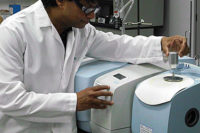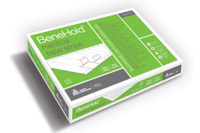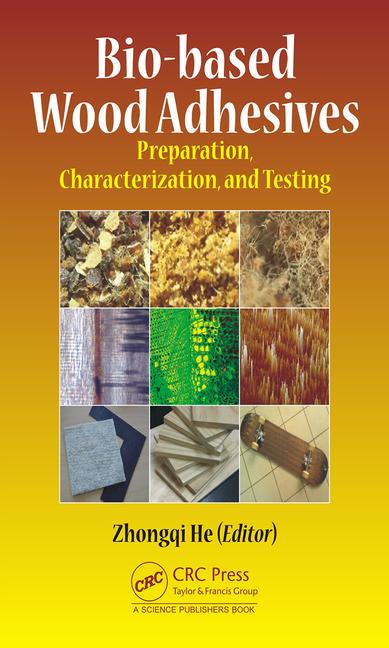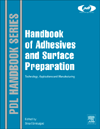Advancing Adhesives: Agricultural Waste and Adhesives
Glue produced from spent fowl is proving to be an alternative to soy-based adhesives.




Almost two-thirds of adhesives produced each year in the U.S. are from non-renewable petroleum resources.1 However, each year brings added pressure to search for alternatives to petroleum-based adhesives, as oil prices rise and concerns over pollution released during the manufacture of these products grow.2
Natural-based adhesives are currently worth $500 million annually and occupy 5% of the adhesive market. Adhesives produced from cow blood, sorghum and wheat gluten have all been studied. At present, one of the most well-researched, natural-based adhesives is produced from soy. Yet the soybean market is unstable, and soy prices are high after the 2012 drought. Glue produced from spent fowl, a byproduct of the poultry industry, is proving to be an alternative to soy-based adhesives.
Spent fowl are egg-laying birds (71-72 weeks old) that experience a decline in egg production and are culled from the flock.3 A variety of methods exist to use or dispose of these birds, but not all of them are economically viable. For example, slaughtering spent fowl for meat can produce 166 g
or more of white meat per bird. Some consumers state that the meat has a poor texture and taste, however, and scientists say that these birds might create a higher risk for salmonella.4
Animal welfare is a significant problem concerning spent fowl. The intensive egg-laying cycle drains calcium from the hens’ bones, which results in a weakening of their skeletons (osteomalacia). Fractures are common during handling and transport. Meat processors willing to accept spent fowl for slaughter can be few and far between. One study indicated that spent fowl transported interprovincially in Canada for slaughter had average transport times of 26 hours, during which they were restricted from eating or drinking.5 Moreover, roughly a quarter of birds arrived at the processor with at least one broken bone.3
Often, spent fowl are composted, rendered or put into other animals’ diets. Sometimes, these birds are even sent to the landfill. It has been a constant challenge for the poultry industry to make use of spent fowl; nearly 144 million must be removed from poultry flocks in the U.S. each year.6
Searching for Solutions
In 2012, Jianping Wu, Ph.D., and Chan Chan Wang developed a technique to turn spent hens into protein-based adhesive. Wu, a researcher at the University of Alberta, used traditional glues produced from animal hides, horse hooves or casein as inspiration for converting spent fowl into adhesive. “When I first came to the university, we had some discussions with the egg industry, and they said spent fowl are a huge issue,” he says.
Wu thought that using these birds to make glue was a sustainable, environmentally friendly method of disposal. “The whole adhesive industry is looking for sustainability, and the public are looking for green chemicals,” says Wu. “Lots of protein is contained in agricultural waste products, and it is not always used efficiently.”
It is the protein tissue on the chicken carcass (e.g., the breast muscle) that is converted into glue. During analysis, protein tissues were treated with base and acid, and then centrifuged and stirred. Wu compared two different methods of adhesive preparation, one using urea, and the other using 3% sodium dodecyl sulfate. The adhesives were tested using conditioned wood veneers to determine their strengths.
The primary issue for protein-based adhesive is that its strength decreases when wet. Indeed, Wu acknowledges that future studies should focus on improving the water resistance of spent-fowl-based adhesives. “However, the adhesive can be used for internal furniture applications,” he says. “We are trying to move forward in the future to improve performance to find broader applications.”
Additional Opportunities
One opportunity exists in combining petroleum-based and spent-fowl-based adhesives together to achieve a product that is stronger and more water resistant than normal spent-fowl-based glue, and more environmentally friendly than petroleum-based adhesives. Unlike with petroleum-based adhesives, aldehydes are not released during the production or drying of spent-fowl-based adhesives. In the U.S. and Europe, the government has set limits on aldehydes, pushing the industry to find alternatives to petroleum-based glues. In Canada, the same regulatory measures are not yet in place, so the Canadian adhesive industry is under less pressure to change.
In the long run, Wu believes that his eco-friendly adhesive will begin to look increasingly appealing to glue manufacturers. “It’s a matter of time, and in the future, there will be more opportunities,” says Wu.
His plans are to ensure the technology is cost effective so it is available and ready for easy commercialization. With more research, he hopes that he will find that glue produced from spent fowl is competitive with petroleum-based glues in terms of price. He has applied to have his process patented. “With the technology and patent application in place, in three to five years we hope to see these new glues used in your home or office furniture,” he says.
It is important to note that Wu’s process is still in the preliminary stages of development. However, he hopes that one day his process could be used for all protein-containing byproducts from the agriculture industry. Since the structure of chicken, beef, pork and other proteins is similar, future research may focus on converting other sources of environmental waste to a useful product that reduces our reliance on petroleum-based adhesives.
Many scraps of meat and tissue are thrown out during processing because they are unappealing to most consumers. By using Wu’s method to convert these wastes into adhesives, these materials would not have to be sent to landfills or needlessly thrown away. Moreover, opportunities exist to convert recalled meat products into adhesive, since the chemical conversion process eliminates any harmful pathogens residing on the meat.
For additional information, visit www.spenthenadhesive.com.
References
1. Amari, R., “IBISWorld Industry Report 32552: Adhesive Manufacturing in the U.S,” IBISWorld, 2012, 1-34.
2. Huang, W., and Sun, X, “Adhesive Properties of Soy Proteins Modified by Urea and Guanidine Hydrochloride,” J. Amer. Oil Chem. Soc., 77 (1), 2000, 101-104.
3. Wepruk, J., “The Disposal of Spent Laying Hens,” Animal Welfare Foundation of Canada, 1999, accessed Oct. 15, 2012, http://www.awfc.ca/english/works/pub/disposehens.htm.
4. Morrison, B., Eisler, P., and DeBarros, A., “Old-Hen Meat Fed to Pets and Schoolkids,” USA Today, 2009, accessed Oct. 15, 2012, http://usatoday30.usatoday.com/news/education/2009-12-08-hen-meat-school-lunch_N.htm.
5. Newberry, R.C., Webster, A.B., Lewis, N.J., and Van Arnam, C., “Management of Spent Hens,” J. Appl. Anim. Welf. Sci., 1999, 2(1), 13-29.
6. Freeman, S.R., Poore, M.H., Middleton, T.F., and P.R. Ferket, P.R., “Alternative Methods for Disposal of Spent Laying Hens: Evaluation of the Efficacy of Grinding, Mechanical Deboning, and of Keratinase in the Rendering Process,”Bio. R. Tech., 19, 2009, 4515-4520.
7. Wang, C. and Wu., J., “Preparation and Characterization of Adhesives from Spent Hen Proteins,” Int. J. Adhes. Adhes., 36, 2012, 8-14.
To find suppliers of raw materials and chemicals, as well as other products, visit www.adhesivesmag.com/suppliers.
Looking for a reprint of this article?
From high-res PDFs to custom plaques, order your copy today!









